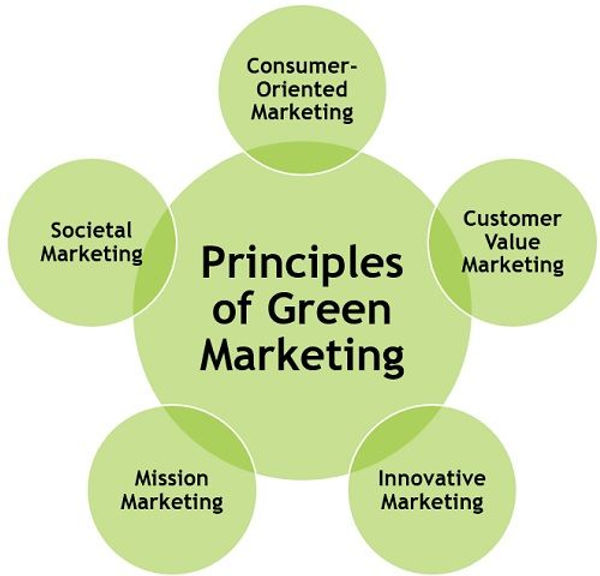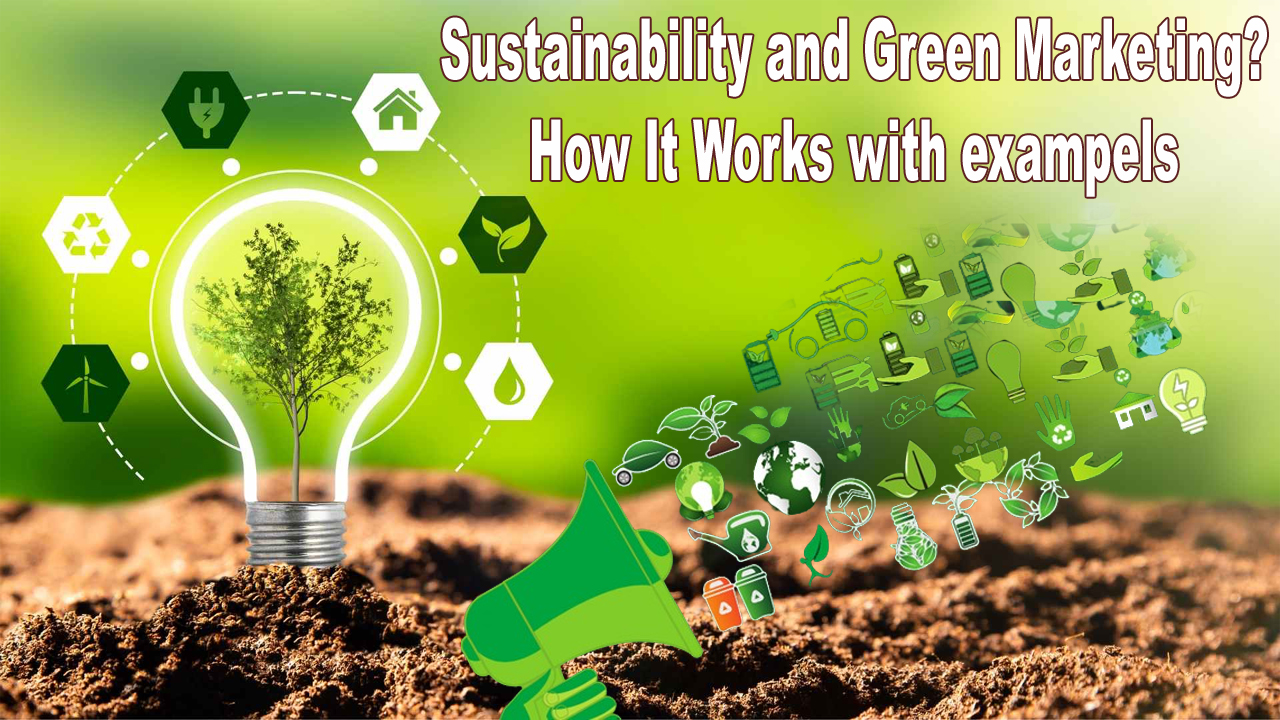In today’s world (2024) businesses are realizing the importance of combining sustainability and marketing for success. This section introduces the idea by explaining what sustainability means for businesses – focusing on being environmentally friendly socially responsible and economically viable. Well, look at how green marketing has changed from early environmental worries to companies now embracing social responsibility. Exploring why green marketing matters in 2024 will see how it helps businesses tackle climate issues stay competitive in the market and make a strong case for being both ethical and economically smart. This is the starting point for understanding how companies integrate green practices into their strategies.
Table of Contents
Key Principles of Sustainable Marketing
Businesses adopting sustainable marketing strategies adhere to fundamental principles that guide their commitment to environmental and social responsibility.
Triple Bottom Line Approach
Embracing the triple bottom line approach involves businesses prioritizing not only profits but also social and environmental impacts. This principle underscores the interconnectedness of financial success social well-being and environmental health encouraging companies to assess their performance against these three dimensions.
Life Cycle Analysis
The life cycle analysis principle involves a comprehensive examination of a product’s environmental impact throughout its entire life cycle – from raw material extraction to disposal. By scrutinizing each phase businesses can identify opportunities to minimize environmental footprints optimize resource use and make informed decisions about sustainable practices.
Stakeholder Engagement
Sustainable marketing recognizes the significance of engaging with a diverse range of stakeholders including customers employees communities and suppliers. By involving these stakeholders in decision-making processes businesses can foster transparency gather valuable insights and build mutually beneficial relationships that contribute to long-term sustainability.
Transparency and Accountability
Transparency and accountability are cornerstones of sustainable marketing. Businesses committed to sustainability openly communicate their practices achievements and challenges. This transparency not only builds trust with consumers but also holds companies accountable for their environmental and social commitments driving continuous improvement in sustainable practices.
The Role of Sustainability in Consumer Behavior
In the current market landscape consumers are changing the way they make choices leaning towards products and brands that prioritize sustainability. This shift is evident in the growing preference for environmentally friendly goods and ethical business practices. Well, dive into the reasons behind this change exploring factors like heightened awareness of environmental issues concerns about climate change, and a desire for products that reflect personal values.
Understanding the role of awareness and education is crucial as consumers become more environmentally conscious. Well, explore how information dissemination including through social media and educational campaigns plays a key role in shaping consumer perspectives and encouraging sustainable choices.
Moreover will examine the significant influence of social media on green consumerism. Social platforms are not just places for connection; they serve as powerful catalysts for spreading sustainability messages fostering ecoconscious communities and putting pressure on businesses to adopt and showcase environmentally friendly practices. This section unravels the dynamics of how consumer behavior is evolving in response to sustainability considerations impacting the choices they make and the brands they support.
Green Marketing Strategies
Incorporating sustainable principles into marketing strategies is crucial for businesses aiming to align with environmentally conscious consumers. This section outlines key green marketing strategies and highlights their significance, particularly in the realm of digital marketing.
Product Innovation and EcoDesign
- Emphasis on creating products with minimal environmental impact.
- Integration of sustainable materials and production processes.
- Continuous innovation to reduce carbon footprints and resource consumption.
Importance in Digital Marketing
Product innovation and ecodesign are compelling narratives for digital marketing campaigns. Companies can leverage social media websites and online platforms to showcase their commitment to sustainability through visually appealing content interactive experiences and educational materials. Digital channels provide a dynamic space for businesses to communicate their eco-friendly product features fostering engagement and building a green brand image.
Sustainable Packaging
- Reduction of packaging waste through eco-friendly materials.
- Emphasis on recyclability and biodegradability.
- Communicating sustainable packaging practices to consumers.
Importance in Digital Marketing
Digital marketing plays a pivotal role in conveying the sustainable packaging message to a broader audience. Brands can use online platforms to share visually compelling content about their eco-friendly packaging initiatives. Additionally, interactive elements such as virtual unboxing experiences or behind-the-scenes videos can effectively communicate the brand’s commitment to reducing environmental impact resonating with environmentally conscious consumers.
Carbon Neutrality and Offset Programs
- Measuring and offsetting carbon emissions from business operations.
- Investing in renewable energy projects and environmental initiatives.
- Communicating carbon neutrality efforts transparently.
Importance in Digital Marketing
Digital platforms offer an accessible avenue to communicate a company’s commitment to carbon neutrality. Through engaging content infographics and video campaigns businesses can educate their audience about carbon offset programs. Transparency is crucial and digital channels provide an opportunity to showcase realtime updates on carbon reduction initiatives reinforcing the brand’s dedication to environmental responsibility.
Circular Economy Initiatives
- Designing products for longevity and recyclability.
- Implementing takeback and recycling programs.
- Encouraging a circular approach to consumption.
Importance in Digital Marketing
Digital marketing allows businesses to narrate the story of their circular economy initiatives. Brands can leverage storytelling through blogs social media and videos to illustrate how their products contribute to a circular economy. Engaging online communities with interactive campaigns and educational content fosters a sense of shared responsibility encouraging consumers to participate in sustainable consumption practices.
Case Studies in Green Marketing (2024)
Case Studies in Green Marketing (2024)
In 2024were seeing some cool examples of businesses doing green marketing – that means they are promoting products and practices that are good for the environment. Let’s look at a few examples.
Fashion that Doesnt Waste
Some fashion brands are now making clothes with almost no waste. They use recycled materials to create stylish clothes while being kind to the environment. These brands love to show off their cool designs and commitment to being eco-friendly on social media. They use things like virtual fashion shows and videos to connect with people who care about the Earth and want to buy clothes that are made responsibly. Also, there’s a focus on using sustainable and ethical ways to get the materials for clothes like reducing water use and working with suppliers who care about the environment. Brands use websites and social media to share these stories helping people understand how they can make better choices when it comes to fashion.
Clean Energy Heroes
In the world of energy, some companies are stepping up to use more renewable energy sources like solar and wind power. They’re not just doing good for the planet; they’re also telling everyone about it online. These companies use websites and social media to share real-time information about how much clean energy they’re making and how it helps the community. They even make cool online tools like calculators to show people how much carbon they’re saving by using clean energy. Also, there’s a focus on creating smart ways to store this clean energy. These companies show off their new technologies online making sure everyone knows how they’re making the world cleaner and more resilient.
Yummy Food Good for the Earth
In the food and drink world some companies are changing things up to be more Earth-friendly. Some are making delicious plant-based alternatives to traditional meat. They use social media to show off these yummy options and work with social media stars to get more people excited about choosing plant-based. At the same time there is a push to get ingredients responsibly. Brands talk about working with local farmers and being clear about where their ingredients come from. They use websites and social media to tell these stories letting people know they can enjoy tasty food and drinks while also doing good for the planet.
Challenges and Opportunities in Green Marketing
When it comes to promoting green and eco-friendly products businesses face some tough stuff and exciting chances.

Overcoming Greenwashing
Read Also: Powerful Digital Marketing Tips and Strategies to Shoot Small Businesses to Success
Regulatory Compliance and Standards
Challenges
Keeping up with all the rules about being green can be tricky. Rules can change and it’s tough for big companies working in different places to meet all the environmental standards.
Opportunities
Companies can go beyond just meeting the rules. By setting ambitious goals to be even more eco-friendly they can stand out as leaders in their industry. Going above and beyond what’s required shows they’re serious about being green.
Consumer Skepticism and Building Trust
Challenges
Some people might not believe companies when they say they’re green. They might remember times when companies said one thing but did another. Building trust can take time especially if people have been let down before.
Opportunities
Companies can be honest and show proof of what they’re doing to be green. Sharing success stories and talking with customers online helps build trust. Listening to what people say and making changes based on their feedback also shows that the company cares.
Economic and Business Advantages of Sustainability
Challenges Some businesses worry that being green might cost too much money, especially at the beginning. They might think it’s hard to afford eco-friendly practices.
Opportunities Going green can save money in the long run. Using energy more efficiently and having a good reputation for being eco-friendly can attract more customers. This can make up for the initial costs. Showing that being green is good for business can convince more companies to give it a try.
Implementing a Successful Green Marketing Campaign
Making a green marketing campaign work well involves a few important steps. First offits crucial for a brand to be clear about its commitment to being ecofriendly. Defining specific goals for helping the environment and making sure these match the brand’s overall identity creates an authenticity that people can trust. Once the commitment is clear it’s time to communicate it effectively. This means using simple and direct language in marketing materials highlighting the real benefits of eco-friendly actions and using visuals to make complex messages easy to understand. Another key step is measuring and reporting the impact of these green initiatives. Keeping track of how much positive change is happening and regularly updating consumers about progress builds trust. By being transparent and providing clear information a successful green marketing campaign not only attracts eco-conscious customers but also makes a real difference in the world.
Final words
The integration of sustainability and green marketing is not just a trend. it’s a necessary evolution in the business landscape of 2024. As consumers become increasingly environmentally conscious businesses embracing sustainable practices and communicating them effectively through green marketing strategies stand to gain not only market share but also a positive impact on the planet.
Throughout this exploration it becomes evident that successful green marketing goes beyond mere promotion—it requires a genuine alignment of brand values with sustainability. By defining clear environmental and social goals and communicating them authentically businesses can establish trust with consumers.

Dilshad Mushtaq is the founder and CEO of Best SEO Zone which is a prominent digital marketing agency based in Pakistan Since 2010. He is a professional website developer & Digital Marketer who can create any website and rank it on Google Page One.




